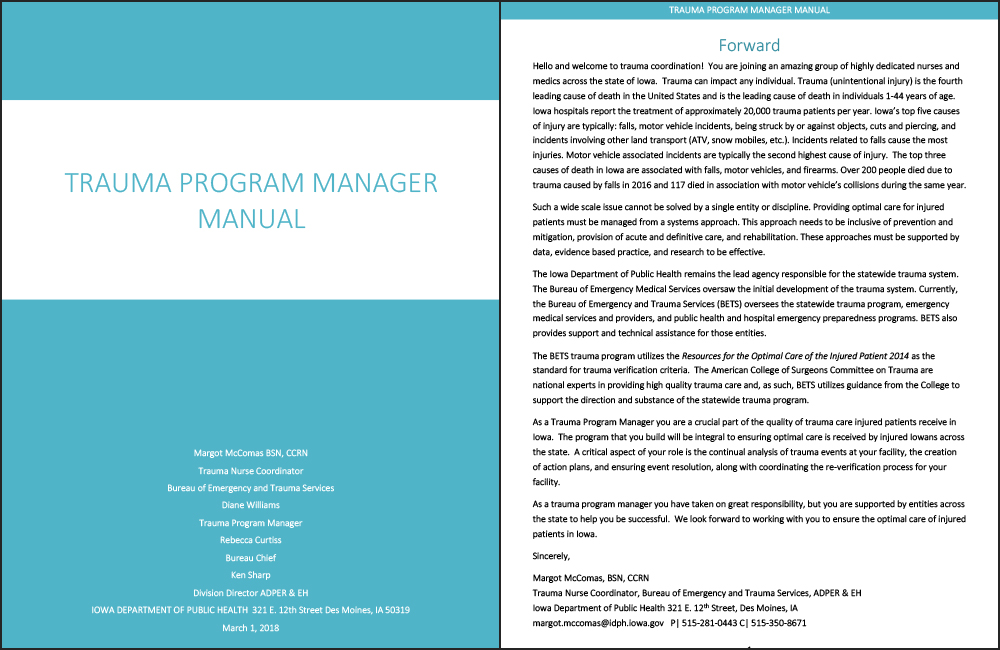
Iowa; Trauma Program Manager Manual
Trauma Center History
Trauma Care has evolved into a specialty in many local and regional hospitals over recent years. Historically called emergency rooms, trauma centers have established high quality, comprehensive medical services for patients. The public relies on trauma centers to provide quality care from initial injury to final disposition, whether at the local hospital or tertiary care center. Regardless of where the trauma program is located, it provides critical services in a timely manner to patients who often need lifesaving measures. As a Trauma Program Manager (TPM), it is a primary responsibility to ensure patients are receiving the best care possible. This is often accomplished by compilation and analysis of data, policy review, and continuous quality improvement initiatives. The following chapters will provide an overview of many aspects of trauma care and acts as a guide to help the TPM succeed in their role. TPM will be referenced throughout the manual and will be the collective title for the role.
Trauma Center Levels
The verification of trauma levels is important in qualifying what essential services are offered at a hospital. The Iowa Department of Public Health (IDPH) is responsible for the verification, or re-verification, of each Level III and IV hospital on a three-year cycle. Criteria from the American College of Surgeons Committee on Trauma (ACS-COT) is utilized to ensure consistent practice standards and available resources. Basic definitions of each trauma level are outlined below.
Specifications
- Last Updated: 2018
- Author(s): Iowa Department of Public Health
- Category: Program Staff
- Tags: 2018, English, Iowa Department of Public Health
PDF Documents
Please login to access file downloads.
